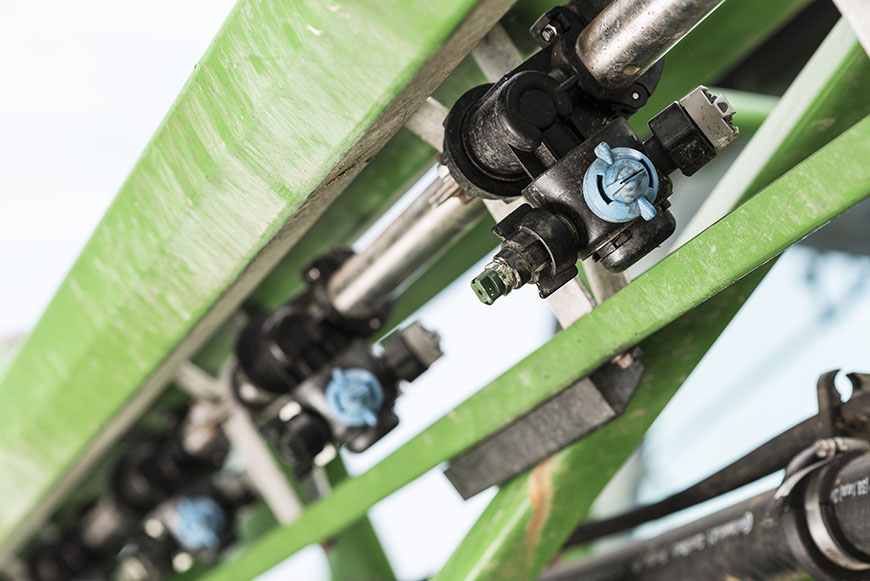Practice Good Sprayer Maintenance

As discussed in an earlier blog post by Wipperfurth, “Control Weeds Before They’re a Threat,” now is the time to evaluate your crop protection program for the coming year. One of the most important aspects of this management is improving spray practices, to help achieve the best product performance and the greatest return on your spray investment.
PRACTICE GOOD SPRAYER MAINTENANCE
Before starting applications this year, assess your spray equipment. To optimize your spray applications, make certain your sprayer is working properly and the right nozzles are being used for each operation. Thoroughly cleaning and calibrating equipment is a simple way to prevent bigger problems.
Because many farmers in my area applied a dry, flowable preemergence herbicide treatment to last year’s soybean crop, it’s crucial to inspect sprayers for dry formula accumulation. Remove the boom’s end cap and check the two-inch space between the end cap and nozzle body for any accumulation. Some farmers triple rinse their tank but don’t clean the end caps, which allows some products to remain in the boom and cause problems the following season. Express end caps, found on newer sprayers, can solve this problem, and some older sprayer models can be retrofitted with these caps.
KEEP SPRAY MANAGEMENT BEST PRACTICES IN MIND
With lower commodity prices, many farmers are more concerned than ever with protecting their crop-input investment. Adjuvants can help your spray hit and stay on the intended target for improved coverage, increased canopy penetration and better uptake, leading to better control of weeds, pests or diseases.
It’s imperative to look at spray management from a system perspective, including everything from spray nozzles to tank-mix compatibility. With hard-to-control weeds, tank mixes are becoming more complex to manage. If you’re unsure whether a mixture will be compatible, do a simple jar test before adding all the products to the spray tank. It’s better to end up with a quart of cottage cheese than 1,000 gallons of it.
Given the Drift Reduction Technology (DRT) program by the Environmental Protection Agency, it’s critical for farmers to understand the correct application process because crop protection product labels will change. WinField offers annual spray clinics throughout Minnesota to help farmers learn more about spray management and interact with spray table demonstrations.
Contact your local WinField retailer for more information about a spray clinic in your area.


